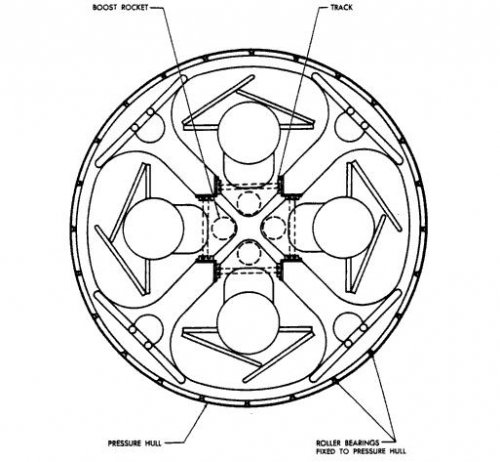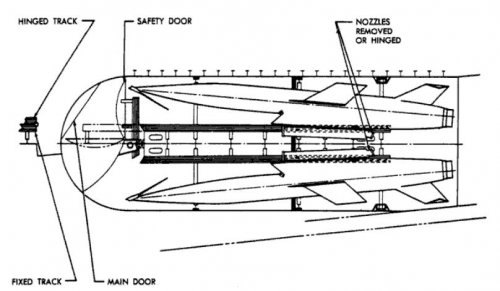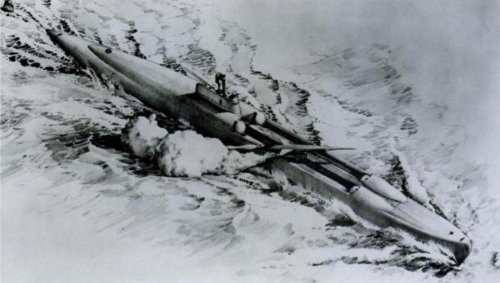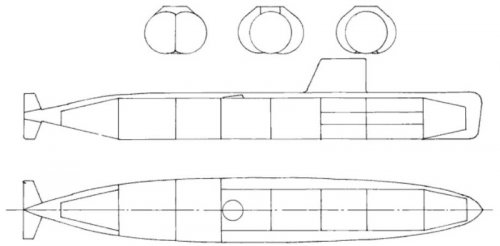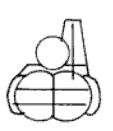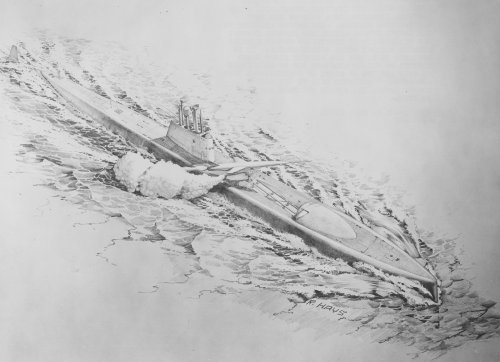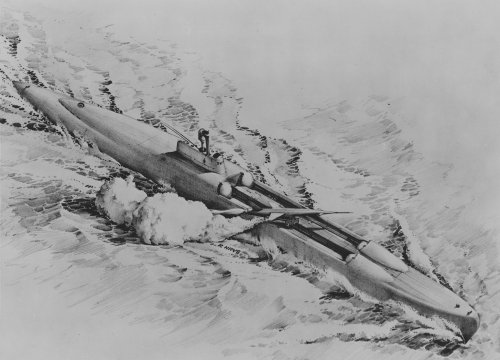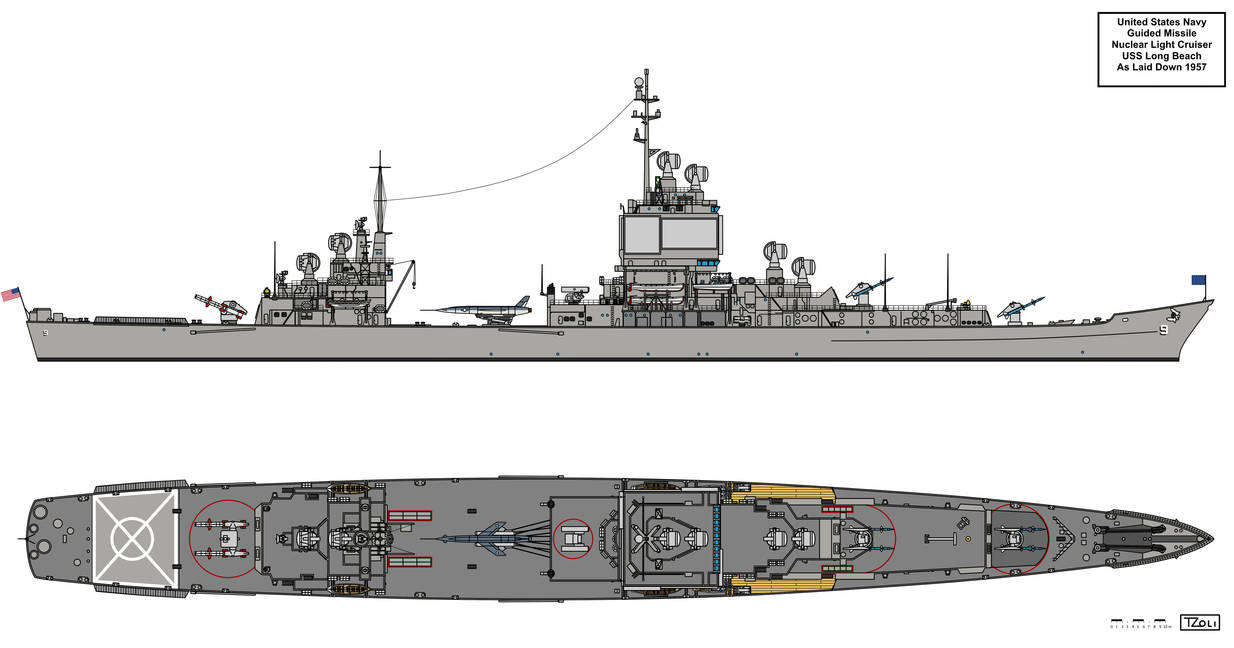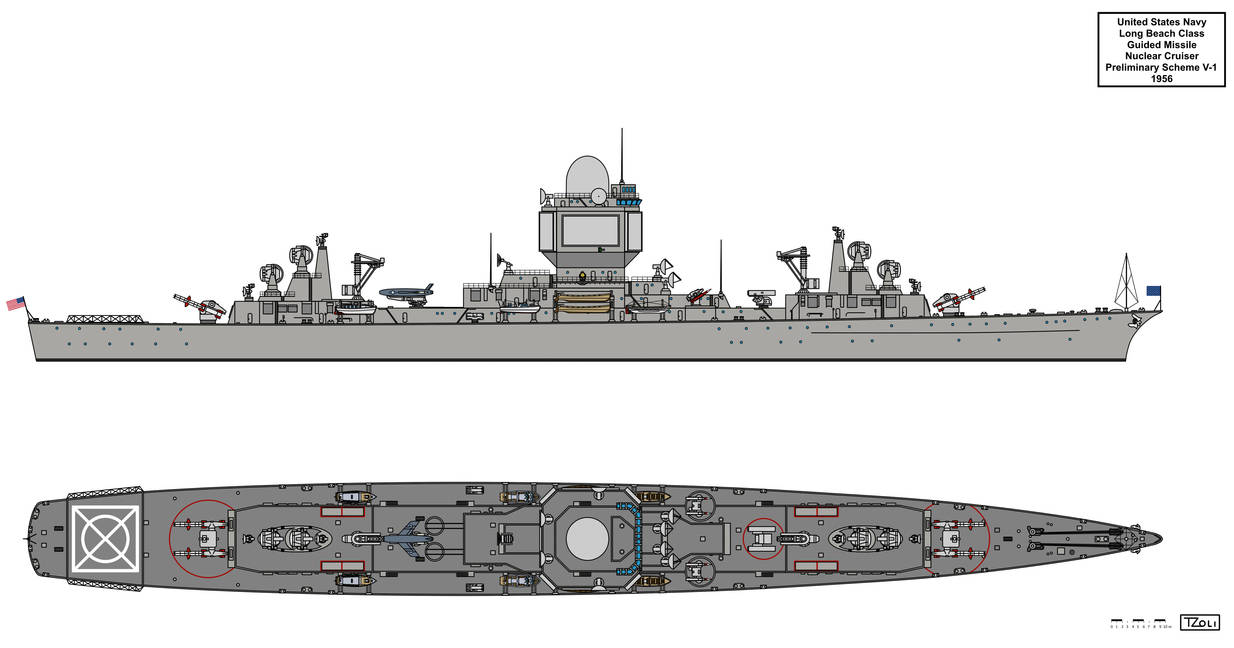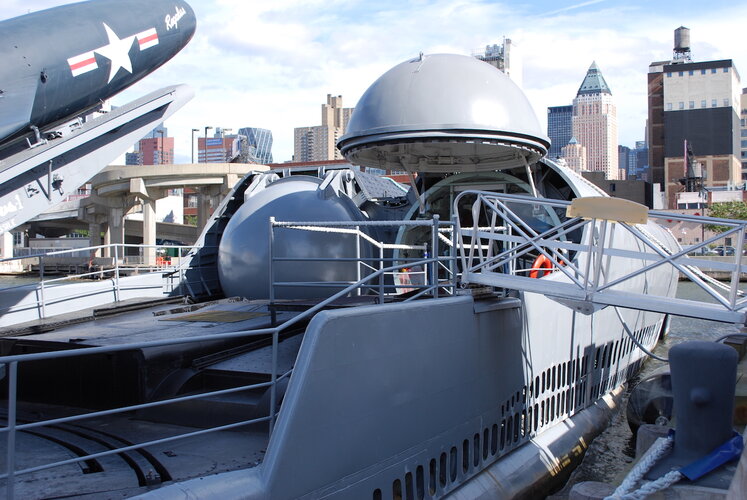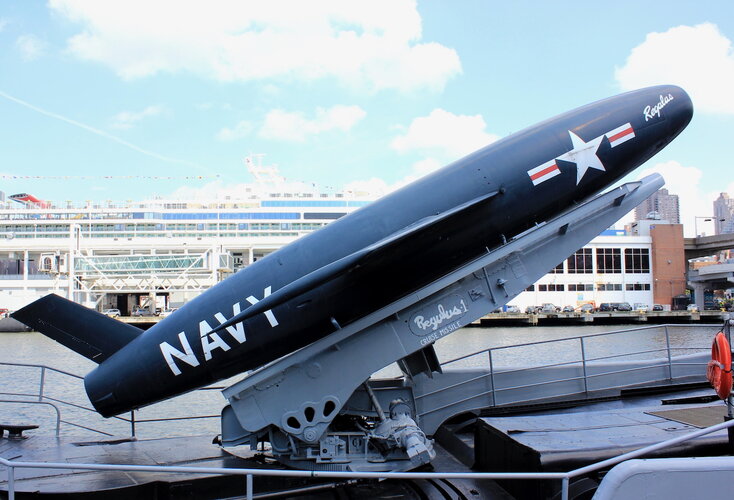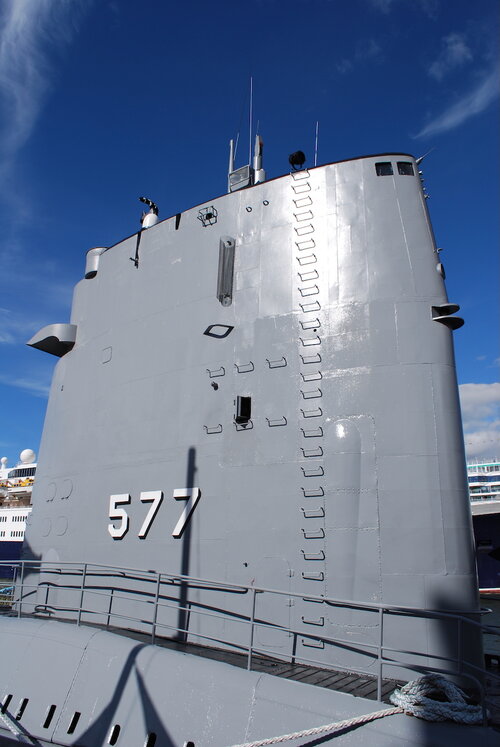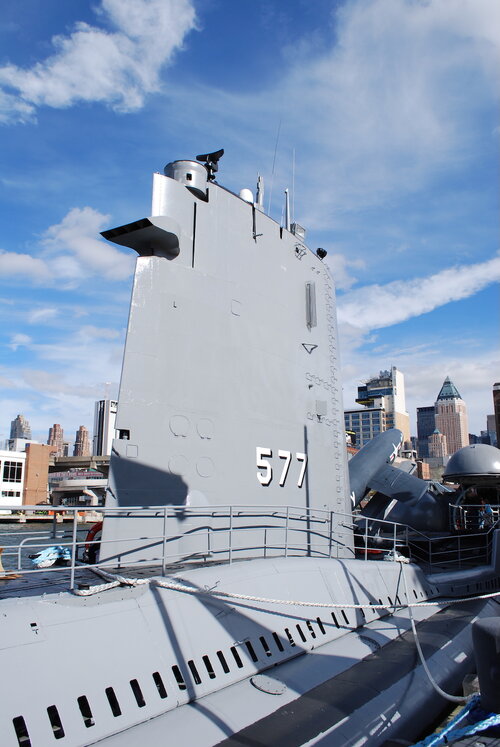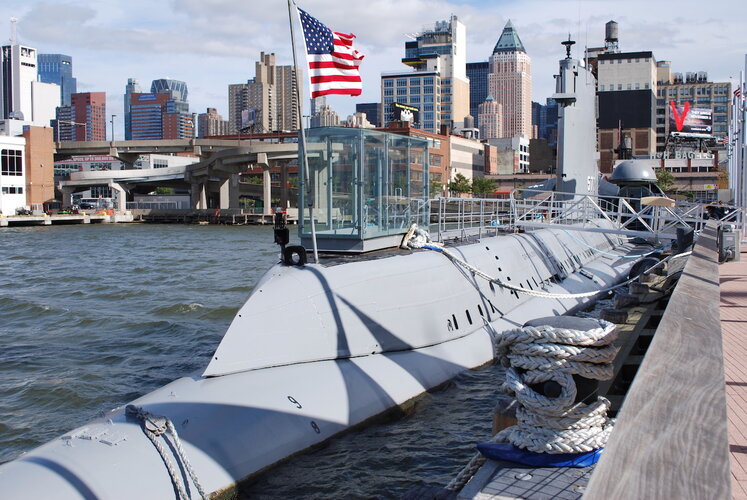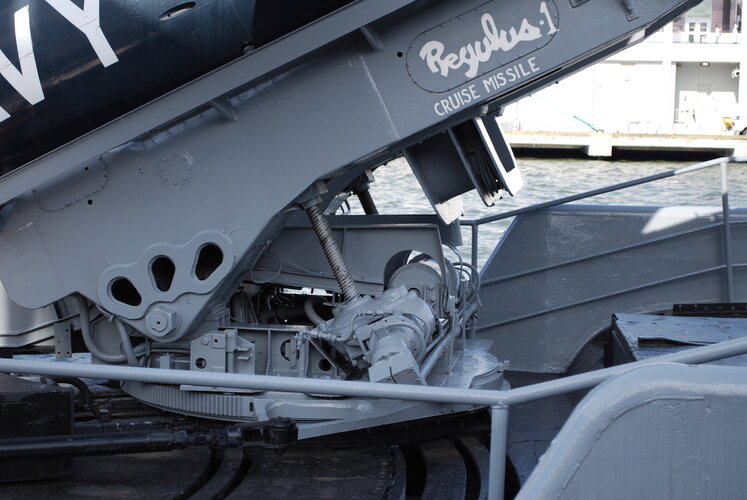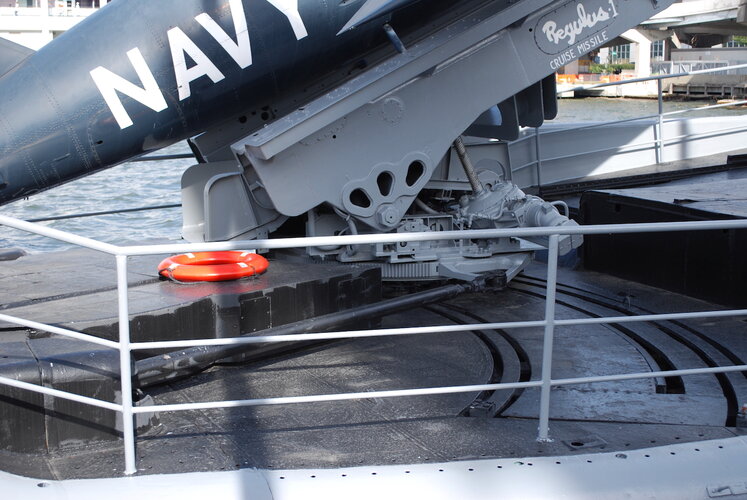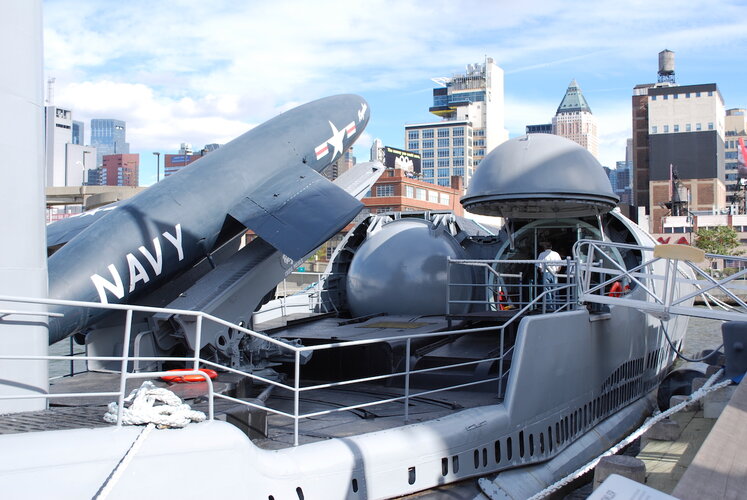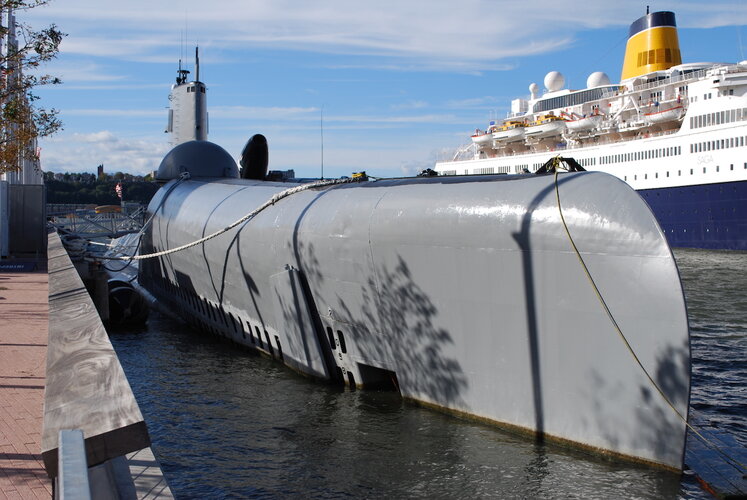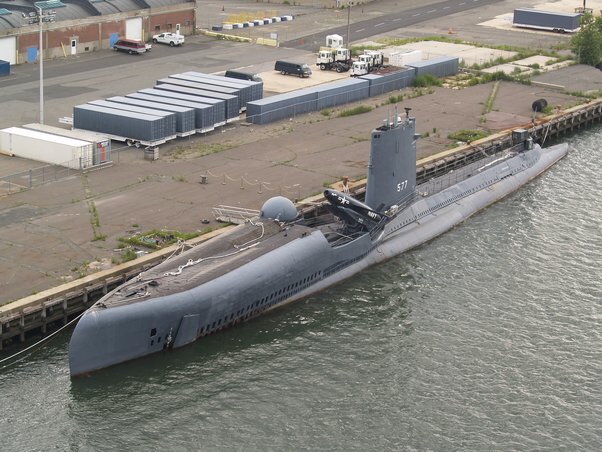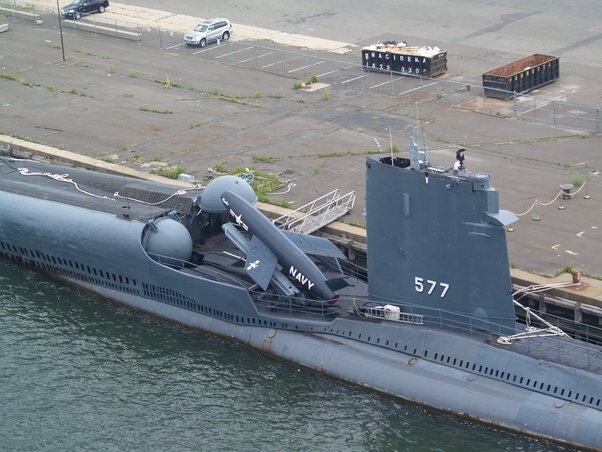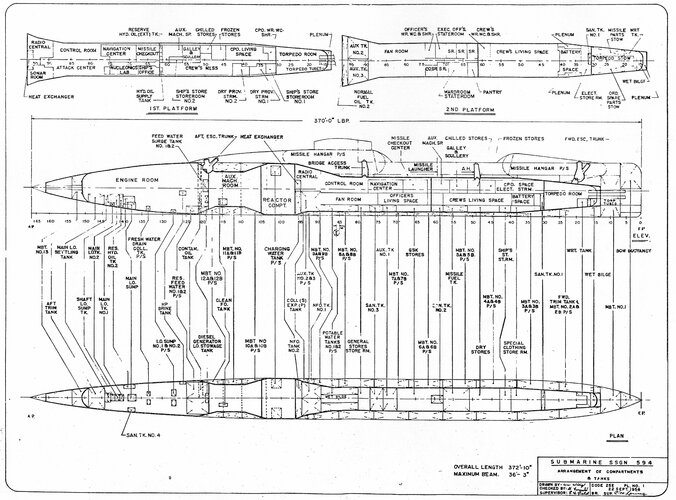Artist's impression of
Permit-class nuclear-powered guided missile submarine (SSGN-594). The
Permit-class would have a surface displacement of 4,000 tons and a submerged displacement of 5,000 tons. Length of approximately 350 feet (106.7 meters) and powered by the S5W nuclear reactor. The
Permit was to carry four Regulus II missiles in four hangers--two faired into the forward hull and two outboard of the sail. The four smaller hangers provided increased survivability in the event of damage or a hanger flooding casualty compared to USS
Halibut (SSGN-587).
Source:
Cold War Submarines: The Design and Construction of U.S. and Soviet Submarines by Norman Polmar and Kenneth J Moore, Brassy's, Inc., 2004.
The big dome shown abaft the missile guidance radar was a radiometric sextant. As in
Halibut, attack and navigational periscopes would have been mounted alongside each other forward of the missile radar. Abaft of the radiometric sextant would have been the MF/HF whip antenna alongside the Type 11 star tracker and the VLF loop, then the BPS-4 search radar and the snorkel induction and exhaust. A somewhat similar scheme for a missile conversion of the big Triton was also considered.
Source:
US Submarines Since 1945: An Illustrated Design History by Norman Friedman, US Naval Institute, 1994.
Early Navy planning had provided for the first three
Permit SSGNs to be funded in fiscal year 1958, a fourth in 1959, and subsequently seven more for a class of 11 submarines. The Navy's long-range plan of 1958 showed an eventual force of 12 SSGNs armed with Regulus II or later cruise missiles. This was in addition to the 40 or more nuclear submarines armed with Polaris.
Source:
Cold War Submarines: The Design and Construction of U.S. and Soviet Submarines by Norman Polmar and Kenneth J Moore, Brassy's, Inc., 2004.
USS
Permit (SSN-594) would later be built to the
Thresher-class design (SSN-593). After the loss of USS
Thresher on April 16, 1963, the class was renamed to
Permit-class.
http://en.wikipedia.org/wiki/USS_Permit_%28SSN-594%29 
